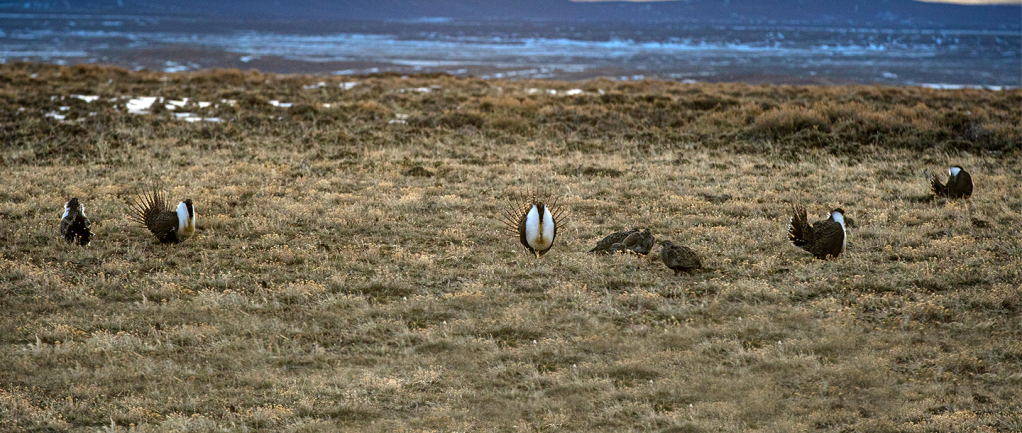The greater sage-grouse. The lesser prairie chicken. While different species, the birds are equally important when it comes to protecting biodiversity in the areas in which we operate and are considered important indicator species that represent the overall health of their regional ecosystems.
In Wyoming, we are coordinating with upstream customers, the U.S. Bureau of Land Management and the Wyoming Game and Fish Department on oil and gas development activity in order to identify avoidance, minimization and mitigation measures that protect greater sage-grouse habitat in the state. Large expansive swaths of sagebrush are the main habitat for sage-grouse and are difficult to reestablish if removed so protecting sage-grouse means protecting sagebrush.
Construction schedules, pipeline routing, truck routes, compressor facility noise levels, and other factors are carefully evaluated to minimize impacts to sagebrush habitat and sage-grouse mating areas, or leks, during mating season. Pipelines are co-located with access roads and county roads to the extent possible to minimize impacts to sagebrush habitat. Williams and other operators also must purchase compensatory mitigation credits when impacts to habitat or construction during mating season cannot be avoided.
And in western Oklahoma and the Texas panhandle, we have participated in the Western Association of Fish and Wildlife Agencies lesser prairie chicken Range-wide Plan and Candidate Conservation Agreement with Assurances since 2014 to ensure that construction and operations are protective of lesser prairie chicken.
As with the sage-grouse avoiding high quality habitat, avoiding leks during mating season, and co-locating pipelines with existing disturbances are important considerations for Williams when siting new pipelines, said Jimmie Hammontree, regulatory compliance specialist.
Lesser prairie chickens avoid vertical structures that could allow birds of prey to roost and easily spot them and also are known to collide with or become entangled in fencing so facility siting and design is an important consideration. Currently the U.S. Fish and Wildlife Service is evaluating whether the lesser prairie chicken should be listed as threatened or endangered and should announce their decision in early 2021.
We also conduct voluntary projects to help improve or preserve wildlife habitat and water resources. These projects are generally focused in the geographic areas in which we operate and are prioritized to protect or improve the area.
“We work closely with non-profit groups and state and federal agencies to identify projects with the highest priority, the greatest environmental benefit and the best chance for success,” Hammontree said.
Charitable Giving
Boosting an ecosystem: desert sagebrush
Wyoming employees, working in partnership with the state Game and Fish Department, planted 1,500 sagebrush …
